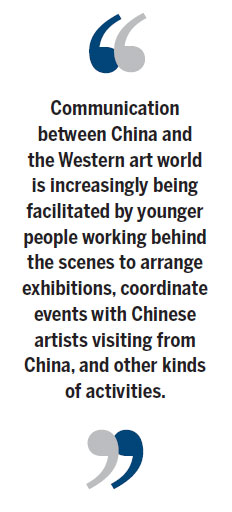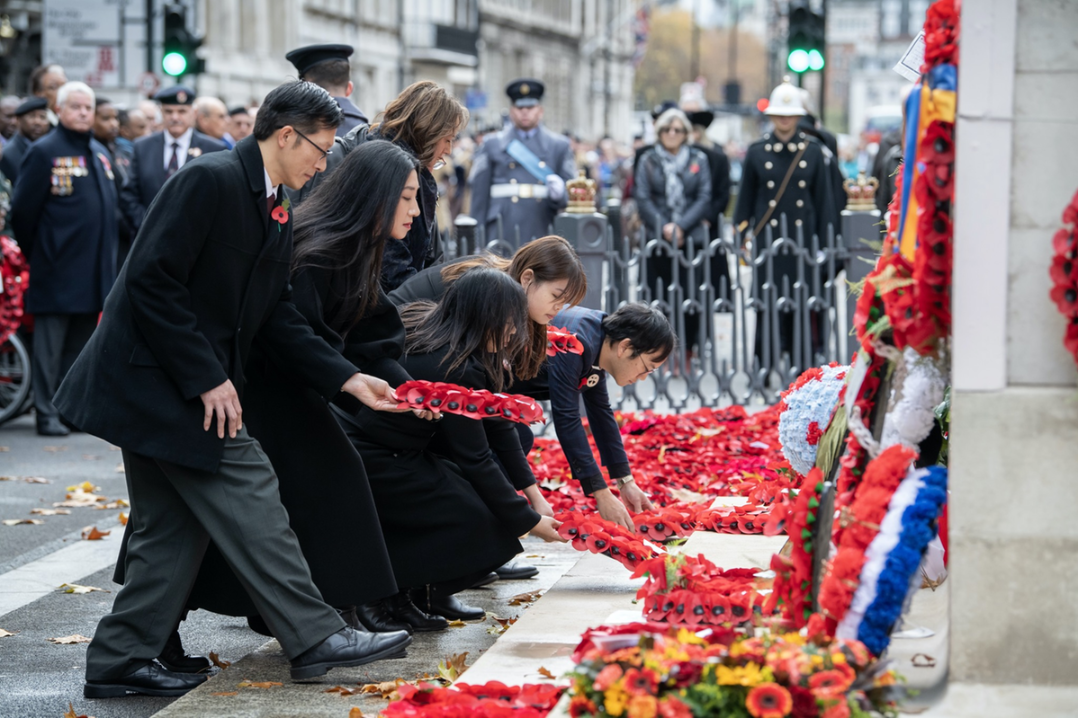China's dynamic new arts leaders

Over the past decade, the number of students passing through UK institutions to study subjects in the arts and creative industries has increased significantly.
The situation is symptomatic of a shifting cultural environment within China, and investment in the arts is expanding fast.
Hundreds of new museums, as well as performance venues and creative institutions, have been built, and China's art market is now considered the world's second largest after the US.
These new museums are not only the significant markers of a growing dynamic cultural landscape in China, but are often stunning in appearance and design in their own right.
However, despite some dramatic archaeological discoveries since the 1980s, which have exposed vast areas of ancient treasures, China's art public is still emerging, and the key focus within the country is very much the development of a national heritage, after decades of relative stagnation.
The most famous of those, of course, is the collection of terracotta sculptures depicting the armies of Qin Shi Huang, the first Emperor of China, unearthed near the city of Xi'an in Shaanxi province.

I visited the warriors in the 1980s as an Edinburgh student during Queen Elizabeth's China trip, and of course now it has become hugely important for China's position in world heritage.
A quarter of a century later, Chinese students coming to Britain to study are often a lot more sophisticated and urbane.
They are keen to contribute to China's new cultural environment, to learn the ways of the modern art world, and become serious players in the numerous art fairs and events being held in galleries and museums across the country, in Asia and globally.
Their significant and growing presence in British universities and art colleges is an indicator of exciting things to come.
China's thirst for intellectual property and creative industry skills will inevitably have a significant impact on the country's ability to deliver its ambitious cultural vision.
And Britain's place as a leader in this field makes it an ideal and important educator for China's ongoing cultural development.
I know of many Chinese students currently studying at undergraduate and postgraduate levels in the UK, in arts management, East Asian art, painting and fine art, at some of the country's best colleges, including the Royal College of Art, Goldsmith's, Kings College, the Slade, Sotheby's Institute of Art (University of Manchester) and Birkbeck.
They range from PhDs researching contemporary artists or modern Chinese painting to undergrads studying in curating.
Even one of these students returning to China will create an impact through their network and contacts in the UK, their skills hopefully feeding back into the industry back home, be that as museum curators, auction house specialists or gallery workers.
Powerful individuals such as property tycoons have typically created large-scale private museums in China, but they have often been unwilling to hand over control to curators, especially if they are younger and deemed too junior to carry out those responsibilities.
This situation is, however, bound to change with the development and exponential growth of their education and cultural expertise.
Students who have attended the courses I have run are now working in a variety of positions in the art world, both in China and in the West - from a new ink painting gallery in Beijing's Caochangdi, to a provincial auction house in the UK, to a high-end private Chinese antiquities museum and contemporary art gallery in Hong Kong, to a prominent international gallery in London.
Since I studied Chinese (which was then relatively rare), both the Western and Chinese art worlds have changed dramatically.
The art industry has become more professional and more recently the importance of Asia, especially Hong Kong, has gained strength.
Communication between China and the Western art world is increasingly being facilitated by younger people working behind the scenes to arrange exhibitions, coordinate events with Chinese artists visiting from China and other kinds of activities.
The knowledge and skills that many of the Chinese students passing through our system here have gathered will play a crucial part in China's ever-growing and complex cultural environment.
Some of them might decide to stay, to develop their experience further, while others will go back almost immediately - but usually the connections made are long-lasting and beneficial across both cultures, feeding a cross-cultural dialogue centered on mutual interests.
The author is director of Office of Contemporary Chinese Art, an art consultancy promoting Chinese artists in the UK.
(China Daily European Weekly 08/08/2014 page9)
Today's Top News
- New engine powers cargo drone expansion
- China to boost intl cooperation on green tech
- Factory activity sees marginal improvement in November
- Venezuela slams US' 'colonial threat' on its airspace
- Xi: Strengthen cyberspace governance framework
- Takaichi must stop rubbing salt in wounds, retract Taiwan remarks






























